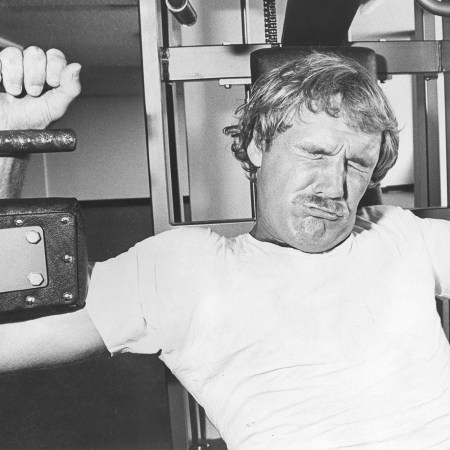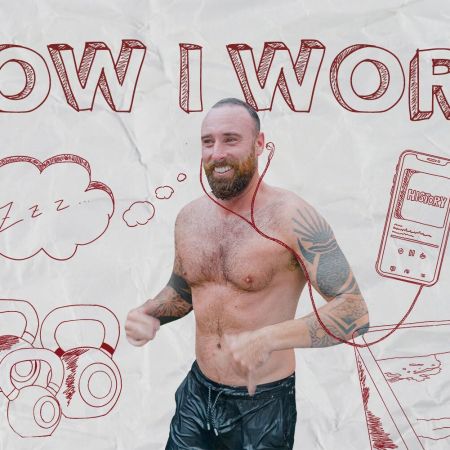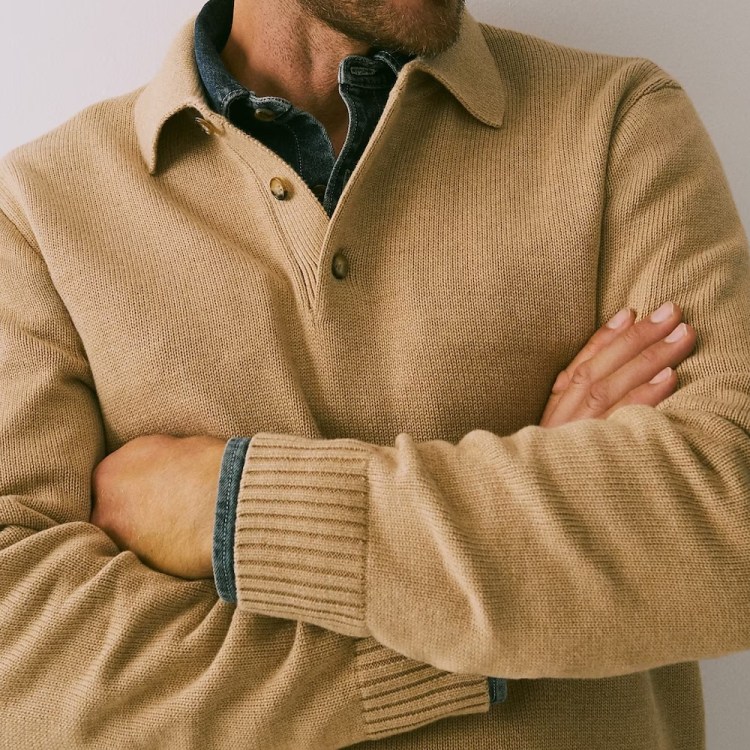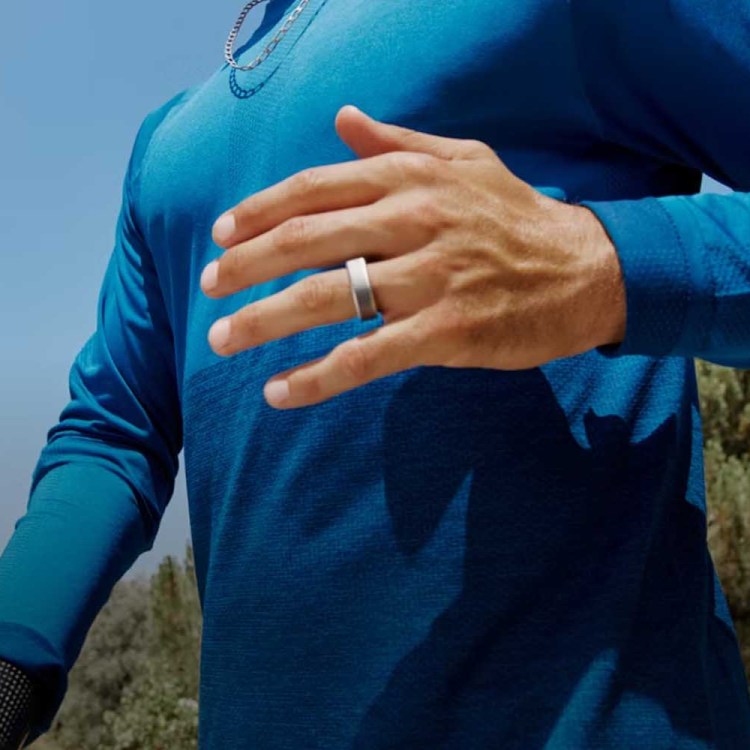Welcome to The Workout From Home Diaries. Throughout our national self-isolation period, we’ll be sharing single-exercise deep dives, offbeat belly-busters and general get-off-the-couch inspiration that doesn’t require a visit to your (now-shuttered) local gym.
The word “energy” already had too many meanings.
Border Collie puppies barnstorming around a backyard are energetic. Cereal bars that contain fructose and maltodextrin give us the energy we need to get through an afternoon. Whirring wind turbines convert kinetic mechanical energy to electricity. Bitcoin mining uses as much energy (in terawatt-hours) year-over-year as the entire Czech Republic.
The word officially entered into overuse, though, on episodes five and six of The Goop Lab. The fifth episode, literally called “The Energy Experience,” features LA-based “body worker” and “somatic energy practitioner” John Amaral, who has patients lie down on massage beds as he plays with an undiscovered dimension in the air four to six feet away from their bodies. In the sixth episode, a medium named Laura Lynne Jackson “beams” energy into sitters, then interprets concepts the universe sends back to her to communicate with the dead.
There is little point in getting too worked up over the confounding definition of “energy” that Gwyneth Paltrow, her lifestyle empire, and this TV show — a six-episode docuseries that dropped on Netflix about 10 weeks ago — have entered into the word’s canon. During Goop Lab, discussions on energy feel somewhat reminiscent of a sophomore philosophy class where no one has actually done the reading. It is a cosmic entity, not necessarily meant to be understood, but apparently deserving of a wry smile, a bemused tilt of the head, a pat on the back for trying. This is the gray area — though goop often colors it Easter pink — where pseudoscience thrives, where phrases like “food for thought” and “give it a go” legitimize (if not blatantly prioritize) anecdotal accounts over blind clinical trials. It’s why the internet was ready the second this series dropped in late January, it’s why the United Kingdom’s National Health Service outright declared the show a “considerable health risk” to the public.
Of course, the NHS has had to battle far more considerable health risks than Paltrowism in recent weeks. And it’s alarmingly tempting, in the age of COVID-19, as we all turn into streaming service ultra-marathoners, to even seek out what is widely-agreed upon nonsense. Anything that’s intertwined with personal health, too, at a time when we’re all thinking of our bodies — how to boost our immune systems, how to sweat without doing the same run for the 13th time since shelter-in-place began — is extra alluring.
With all of that out of the way, I have a confession. I quarantine-binged The Goop Lab in its entirety this weekend. I went in with an open mind, refusing to read a single scalding review beforehand (those came later — and seriously, these writers had their takes ready, they might as well have been dropping obits) and actively searched for legitimate, usable strategies, practices or concepts I could apply to my personal fitness. Why take goop so seriously? It has a $250 million valuation, millions of followers across all relevant social platforms, hugely successful pop-up shops in cities across the States, and yearly wellness summits attended by high-profile actors, athletes and authors. It matters, whether you like it or not. And besides, I enjoy learning new ways to feel and perform better. An open, patient ear helps in that regard.
That ear had to hear the word energy exactly 4,000 times over the season, but there actually was, believe it or not, some relevant wellness knowledge hidden within all the Goopian muck. That muck generally followed the same format: Paltrow and her Chief Content Officer Elise Loehnen interview a couple special guests in a perfectly-lit office where people who’d rather be drinking sangria pitchers under delicately hung Edison bulbs drink hemp tea while riding around on bubblegum pennyboards. The special guests, who’ve taken select goop staffers on some sort of retreat in the weeks or months preceding, get a chance to explain their research and dish on one staffer who had a particularly strong reaction to the experience. There are only three episodes worth watching within that framework, and just two special guests especially worth remembering. These episodes are the second, third and fourth: “Cold Comfort” “The Pleasure Is Ours” and “The Health Span Plan.”
“The Health Span Plan”
This episode focuses on aging, and introduces the work of both Dr. Valter Longo, a cell biologist who works at the University of Southern California, and Dr. Morgan Levine, a professor in pathology at the Yale School of Medicine. Both are concerned with the concept of aging as disease; similar to the work of Harvard geneticist Dr. David Sinclair, who I had the chance to speak to just last month, Dr. Longo has shown that aging can be addressed at the molecular level with various lifestyle changes. For example, he’s a big believer in calorie restriction (intermittent fasting) and a pescatarian diet.
Dr. Levine, meanwhile, employs blood work to test for inflammation, metabolism, kidney and liver function, and cardiovascular health to determine a person’s chronological age. Think of it as a true or internal age. When contrasted with your chronological age, a biological age is a more accurate arbiter for your risk of cancer, heart disease, or diabetes. Personal fitness, much like personal savings, thrives best on information. Sometimes, you have to look at your account balance to plan a way forward. Talk to your doctor about the best way to get your blood tested, or consider a biological age test. There are a few out there, including myDNAge, TeloYears, and InnerAge. If the number is above your chronological age, don’t panic. That’s where the work of Dr. Sinclair is so helpful; he’s proven in Cambridge that fasting, exposure to cold temperatures and high-intensity interval training will literally put years on your life — and high-quality years, at that.
“The Pleasure Is Ours”
Easily Goop Lab‘s most celebrated episode, and for good reason. The star is Betty Dodson, a 90-year-old who’s been teaching women how to orgasm since the ’70s. She’s a gynecologist with Bourdain vibes, a patchy jacket and no hesitation in correcting Paltrow’s odd misunderstanding of female anatomy. (What GP considers the vagina at one point during the episode is actually the vulva.) If you’re a woman, this is essential, long-overdue TV — Goop Lab does well to show over a dozen different types of vulva, after a discussion on the disconcerting rise of labiaplasty surgery, which has long been a mainstay in the porn industry. Most courageously, though, the episode closes with the orgasm of Dodson’s fellow sex educator Carlin Ross, whom she guides through the experience. How does any of this relate to wellness?
For women, improved sexual awareness and a reliable masturbation routine can help improve mood, aid in sleep, improve confidence and communication with partners, and even reduce pain from menstrual cramps. For men who have female partners, those are all good things. When supported, you’ll likely grow closer with your partner, and have a healthier relationship — which, we all know by now, has massive affects on personal wellness. For those who don’t (but hope/plan to, one day), it’s an important kick in the pants, a lesson that the orgasms performed through porn are just that, performances, and expectations need to be personalized and constantly reset or reconsidered depending on the women they’re seeing.
“Cold Comfort”
I’ll admit, I was a little surprised to see Wim Hof himself on an episode of Goop Lab. He doesn’t just look like Santa Claus — he’s borrowed a bit of his aura, a rare 21st-century legend. Upon hugging him, Paltrow even laughed “You’re actually real!” The Dutch extreme athlete made it over 7,000 feet up Mt. Everest wearing only a bathing suit and shoes. He’s run half-marathons completely barefoot, on the ice and snow. He once made “full-body contact” with ice for nearly two hours. He’s an absolute maniac, in other words, just sans David Blaine intensity. He’s far more mischievous, and able to tap into that secret sauce when needed, like the original, puppet-Yoda of Empire Strikes Back. On Goop Lab he has eight staffers practice the three pillars of the Wim Hof Method: cold therapy, breathing and meditation. They breathe into their bodies, aggressively, filling the rib cage with air, until their limbs start tingling and their minds go numb (I’ve practiced this before, with a surf yogi in Hawaii; it’s nuts), allowing their thoughts to drift away. Then they practice 20 minutes of snow-ga — barefoot flows in the snow along the banks of Lake Tahoe — before actually jumping into the water.
It would all be so perfectly goop … if only Wim Hof, and cold therapy weren’t actually scientifically corroborated. Exposure to cold water is dynamite for mental health, which is the main benefit Wim Hof touts in the episode; it encourages the release of neurotransmitters like dopamine, adrenaline, norepinephrine and serotonin, all of which have anti-depressive effects. But it isn’t too shabby for the body in general, either; occasionally swimming around in a freezing cold lake, or committing to a bonkers-chilly shower has been shown to catalyze post-workout recovery, stave off injury, lower blood pressure, increase metabolic rate and stimulate the immune system.
Netflix captured one hell of a moment — Wim Hof yelling into the California winter as editorial assistants jumped into 38°F water — and like all TV, I guess, that’s what this show was ultimately about, good shots and better soundbites. The disclaimer at the beginning of each episode did indeed portend that Goop Lab wasn’t meant to replace medical advice. But at least that scene meant something. It gave something to the world, a proven practice that might be worth introducing to our daily doldrums. And at the very least, it gave that tiny, mighty word, “energy,” a well-deserved break.
Whether you’re looking to get into shape, or just get out of a funk, The Charge has got you covered. Sign up for our new wellness newsletter today.























